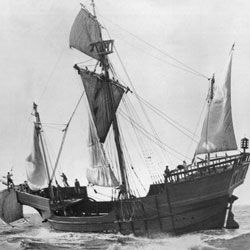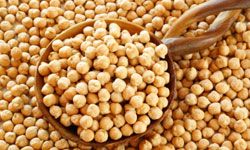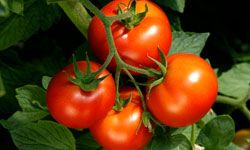Much of what we learned about Christopher Columbus as kids is questionable. He did not, in fact, set out to prove the Earth was round -- most people already knew that by the late 15th century. And whether an already inhabited land can be "discovered" is, at the very least, up for debate.
One thing we know beyond a doubt is that Columbus found food -- new and amazing food in bright colors and bold flavors. European cooking as we know it hinges on what Columbus found when he mistook America for India and landed in the New World.
Advertisement
We also know that what he and his seamen ate on their way over was not particularly bright or bold.
The contrast must have been striking.
Here, five things Columbus would have eaten on his adventures. The first is a common seafarer food from the time, and one you'll want to do a very loose take on if you include it in a holiday feast.





